
5 minute read
The Science of Yoga: Uttanasana – Raymond Long, MD, FRCSC
by IYNAUS
UTTANASANA
BY RAMOND LONG, MD, FRCSC
Advertisement
INTENSE FORWARD-BENDING POSE
UTTANASANA IS A STANDING POSE AND A FORWARD BEND THAT FUNCTIONS TO lengthen the hamstring and calf muscles, with a secondary stretch of the back. You can use a technique called triangulation to locate the focus of the stretch and deepen it. For example, activate the quadriceps to straighten the knees. This moves the hamstring insertions farther away from their origin on the ischial tuberosities (the sitting bones). Flex the trunk to draw the ischial tuberosities up and away from the hamstring insertions on the lower legs. To produce this action, simultaneously contract the hip and trunk flexors to draw the torso forward while engaging the quadriceps. These actions combine to move the origin and insertion of the hamstrings farther apart, “triangulating” the hamstrings and stretching the muscle. To add to this stretch, constrain your hands on the mat and attempt to drag them forward by bending the elbows; this draws the trunk further into flexion and exemplifies a secondary action contributing to the primary action of the pose. If you cannot reach the floor, grasp the backs of your knees or lower legs and bend the elbows. Because the hands are fixed in place, on the mat or holding the legs, the contractile force of the biceps draws the trunk deeper into flexion. This force is transmitted through the posterior kinetic chain to the pelvis, tilting it forward and lifting the ischial tuberosities, thereby augmenting the stretch of the hamstrings.

Remember that contracting the quadriceps creates reciprocal inhibition of the hamstrings, their antagonist, signaling the hamstrings to relax and move more deeply into the stretch. Experience this in Uttanasana by firmly engaging the quadriceps, and note how the sensation of the stretch changes.
BASIC JOINT POSITIONS
• The hips flex. • The trunk flexes. • The femurs internally rotate (slightly). • The knees extend. • The cervical spine is neutral. • The shoulders flex overhead. • The elbows flex. • The forearms pronate.
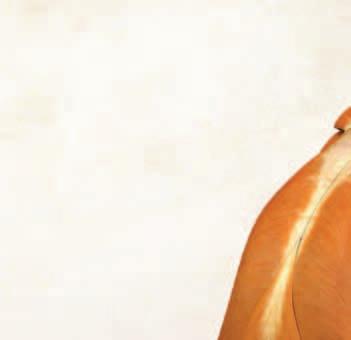
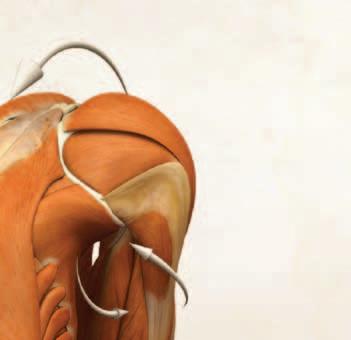
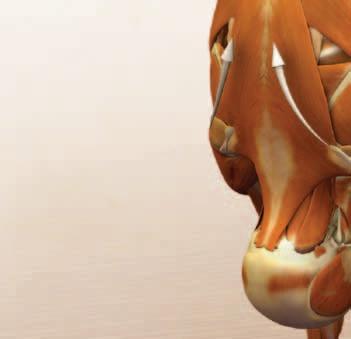
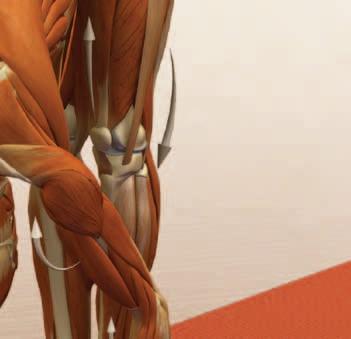
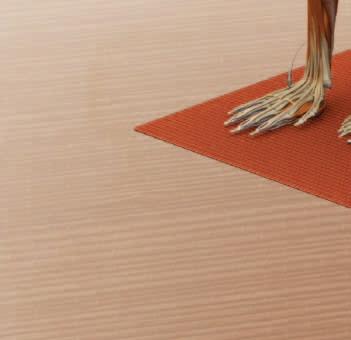

uttanasana Preparation
Tightness in the hamstrings and/or back muscles can limit the depth of the forward bend in Uttanasana. At first, allow the muscles to acclimate to being stretched by resting on a chair with the knees bent. This releases the hamstrings at their origin on the ischial tuberosities.
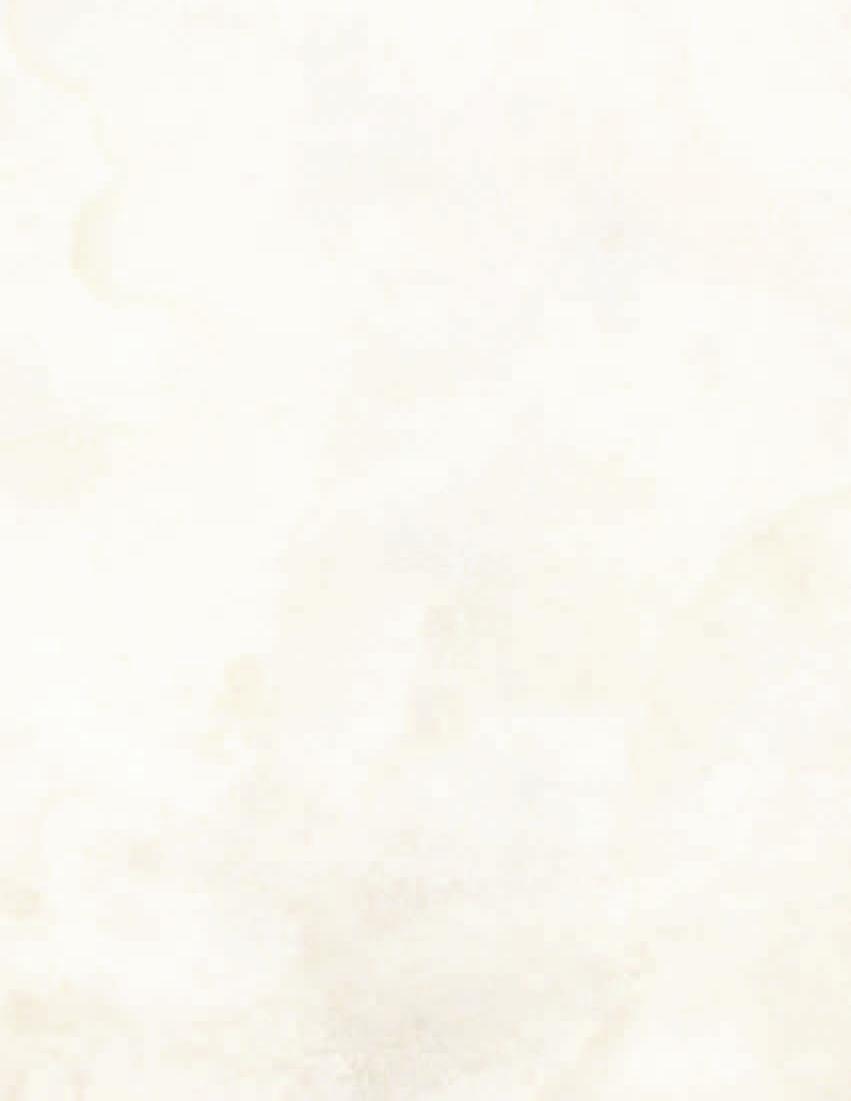
Then gradually straighten the knees by activating the quadriceps. As your flexibility increases, you can draw the trunk toward the thighs with the knees slightly bent. Holding the trunk in this position, engage the quadriceps to straighten the knees, and feel the stretch in the hamstrings. If the back is more flexible but the hamstrings are tight, then fold forward (flexion) with the knees slightly bent. You can also prepare the body for Uttanasana by using a forward bend such as Paschimottanasana (Intense Stretch to the West Pose) to lengthen the posterior kinetic chain.

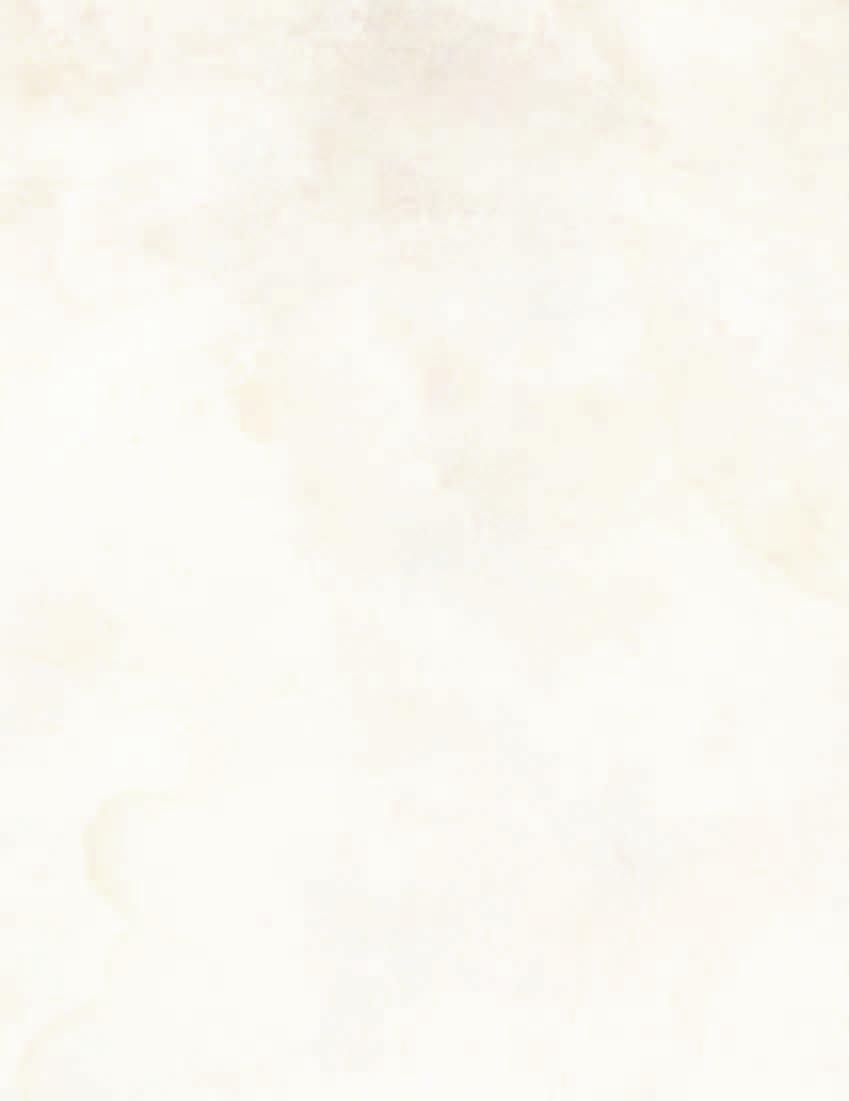


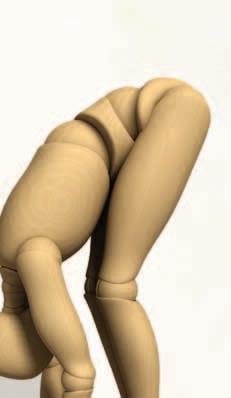
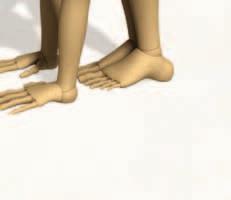

S t e P 1 Flex the trunk by activating the rectus abdominis. This creates reciprocal inhibition of the lower back muscles, signaling them to relax. Tilt the pelvis forward by contracting the hip flexors, including the psoas, pectineus, and anterior adductor muscles. This signals the hip extensors (the gluteals) to relax.

S t e P 2 Activate the quadriceps to straighten the knees. The tensor fascia lata synergizes this action when the knees are straight. Bear in mind that when we stretch a muscle, we also pull on its attachments and passively produce the same movements as when we contract the muscle. Pulling on the gluteus maximus thus externally rotates the thigh. Engaging the tensor fascia lata also turns the femurs in slightly. The cue for this action is to attempt to gently drag the feet apart. The feet do not move, but the femurs turn inward with this cue. Use this action to adjust the femurs, so that the knee caps point forward symmetrically. The gluteus minimus is also pictured here. This muscle synergizes hip flexion when the femur is flexed. Use the image to help visualize the muscle engaging.
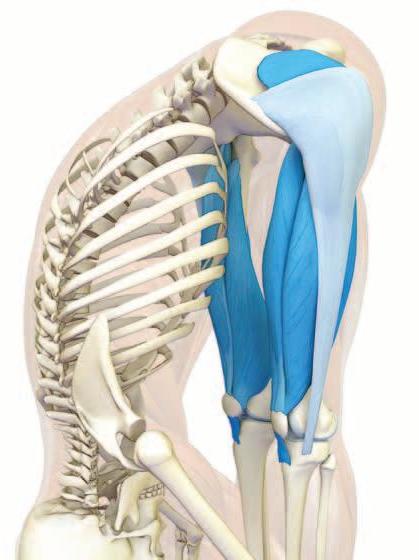

S t e P 3 Pronate the forearms to press the mounds of the palms of the hands (the fleshy area at the base of the fingers) into the mat. With the hands fixed on the floor, attempt to bend the elbows by contracting the biceps. This draws the trunk toward the thighs.

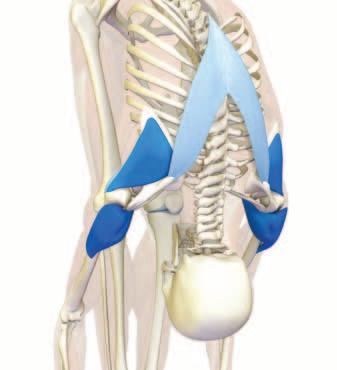
S t e P 4 Draw the shoulders away from the ears by activating the lower third of the trapezius. Keep the hands fixed on the floor, as described in Step 3, and attempt to drag the hands forward by contracting the anterior deltoids. This synergizes the action of the biceps in the previous step to flex the trunk more deeply. Remember to activate the quadriceps when applying these secondary actions so that you create reciprocal inhibition of the hamstrings, helping them to relax into the stretch.
SuMMArY The steps described above stretch the muscles of the posterior kinetic chain, including the gastrocnemius, hamstrings, gluteus maximus, and posterior portions of the gluteus minimus, quadratus lumborum, and erector spinae.
Excerpt from the forthcoming Long, Ray. Yoga Mat Companion 1: Anatomy for Vinyasa Flow and Standing Poses . Austin, TX: Greenleaf Book Group, 2011. ISBN 978-1607439-424. 128 pages. $24.00. Reprinted with permission.








